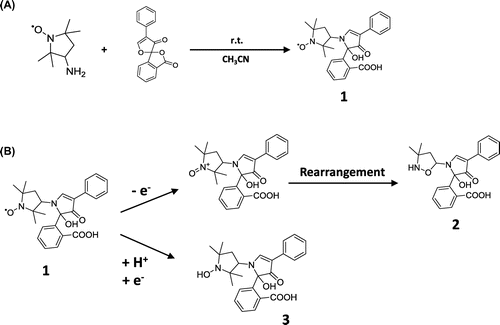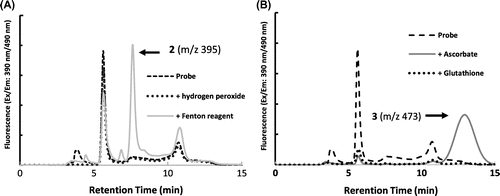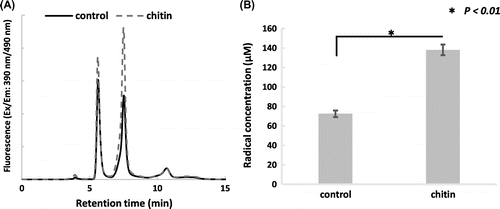Figures & data
Figure 1. Synthetic and reaction schemes of the probe. (A) Synthetic scheme of pre-fluorescent probe (1). (B) Reaction scheme of probe (1). (1) was oxidized, then rearranged to (2) and recovered fluorescence. (1) was reduced to (3) and recovered fluorescence. In accordance with the report by Jia and colleagues, compounds (2) and (3) were characterized by LC/MS and their m/z were 395 and 473, respectively.

Figure 2. Chromatograms of in vitro reaction solutions using oxidants and reductants. HPLC conditions: column; TSK gel ODS 80-Ts QA (4.6 i.d. ×150 mm), mobile phase; 50 mM sodium acetate buffer (pH 4.0): methanol (2:3, v/v), flow rate; 1.0 mL/min, injection volume; 10 μL, column temperature; 30 °C. Only radical molecules were detected selectively. Reaction with oxidants; hydrogen peroxide and hydroxyl radical (A). Reaction with reductants; sodium ascorbate and glutathione (B).

Figure 3. In vivo apoplastic radical analysis. An oxidative burst triggered by chitin was observed. About two times more radicals were released than by control samples by 60 min. Representative fluorescence chromatograms of the incubating solution with and without chitin (A). Apoplastic radical concentration after 60 min incubation, estimated using the calibration curve. Asterisk indicates a significant difference to control (*p < 0.01, n=3), analyzed by the Student’s t test (B).

